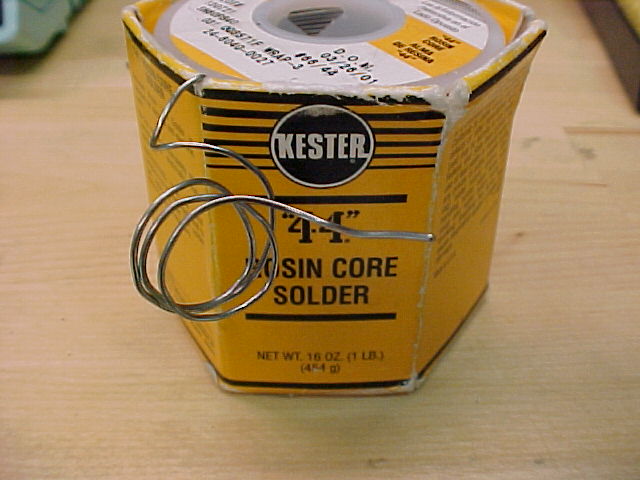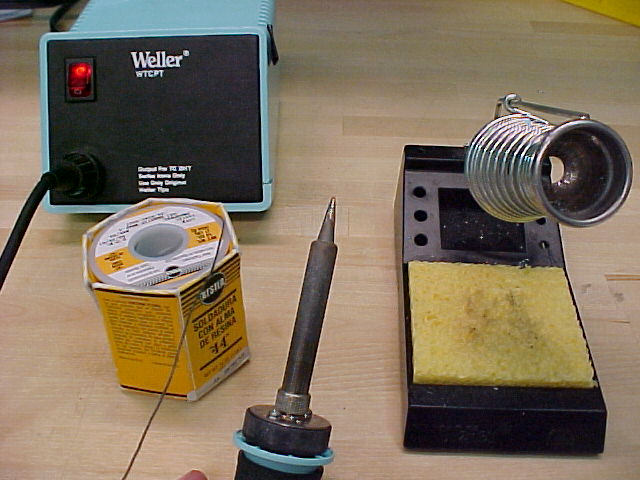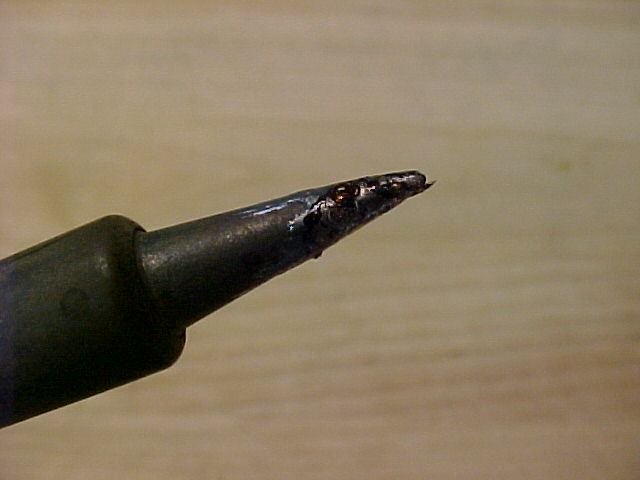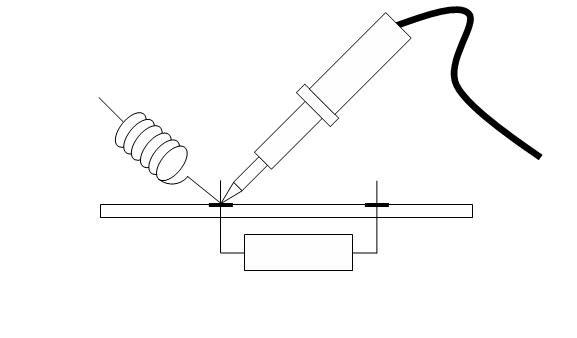
Soldering Guide for Electronic Kit Assembly
by M. T. Mruzek, MTM Scientific, Inc.
Soldering is a basic skill that can be easily mastered with practice and attention to a few important details. Solder is a metal mixture of lead and tin which melts at relatively low temperatures, approximately 210 C (410 F). Molten solder flows freely and bonds to copper and electronic components or boards supplied with a solder plating ("pretinned"). Hobbyists use solder to assemble circuits because it has the dual purpose of fastening the components in place and making the electrical connection.
Solder is usually used in the form of a thin wire. A common composition is 50% lead and 50% tin, although this ratio is varied somewhat to adjust the melting temperature. Recent rules and regulations are limiting the use of lead in electronics, and therefore 'lead free' solders are becoming more common. However, the lead/tin solders are easiest for beginners to use.
The solder used for electronics contains a material called flux in the central core. The flux is an organic material which promotes the flow and adherence of liquid solder. Sometimes the flux is described as a rosin core. Rosin core solder is used for electronic work. Note: Plumbing solder should not be used for electronics because it has an acidic flux which will eventually cause problems with corrosion.

Solder for electronics should be Rosin Core.
A soldering iron is a pencil shaped tool with a hot tip which melts the solder and makes the connection. The simplest type of soldering iron is a 25 or 35 Watt heater element with a plastic handle and a hot metallic tip. The wattage is low because only the tip of the iron is hot. More elaborate soldering irons are temperature controlled, which is a nice feature, but not a necessity.

This is a typical benchtop setup for soldering.
In practice a soldered connection is made by placing the componets in position, applying the tip of the soldering iron to the connection and, after a few seconds, applying the rosin core solder wire until it melts and flows. The most important part of the process is to start with a clean soldering tip. The tip of the soldering iron is hot, and over time it will accumulate burnt rosin and unused solder. Therefore, the usual practice in soldering is to keep a small damp sponge on the workbench for cleaning the iron's tip. The tip is cleaned by briefly and briskly wiping it across the face of the sponge with a twisting motion. After the tip is cleaned, some hobbyists add a small amount of solder to make the tip shiny and bright.

Don't even think about soldering with a dirty tip. Wipe it on the sponge!
An ideal solder joint is made with a simultaneous and brief application of the hot, clean tip and rosin cored wire solder. Avoid applying large amounts of heat to the electronic components for long times, especially with transistors, integrated circuits and capacitors.

4 things together: solder, solder iron tip, component lead and the circuit pad.
When learning to solder it is a good idea to practice on spare parts first. You will quickly get a feel for it. When you are assembling older circuit boards it is helpful to clean the solder pads with a light wipe of fine sandpaper or scotchbrite. Also, soldering often creates a small plume of smoke. You should avoid inhaling the smoke, and also be aware of nearby smoke detectors, which can be accidentally tripped.
Good luck with your electronic project, and happy experimenting!
Click Here to View other Interesting Projects at MTM Scientific, Inc.